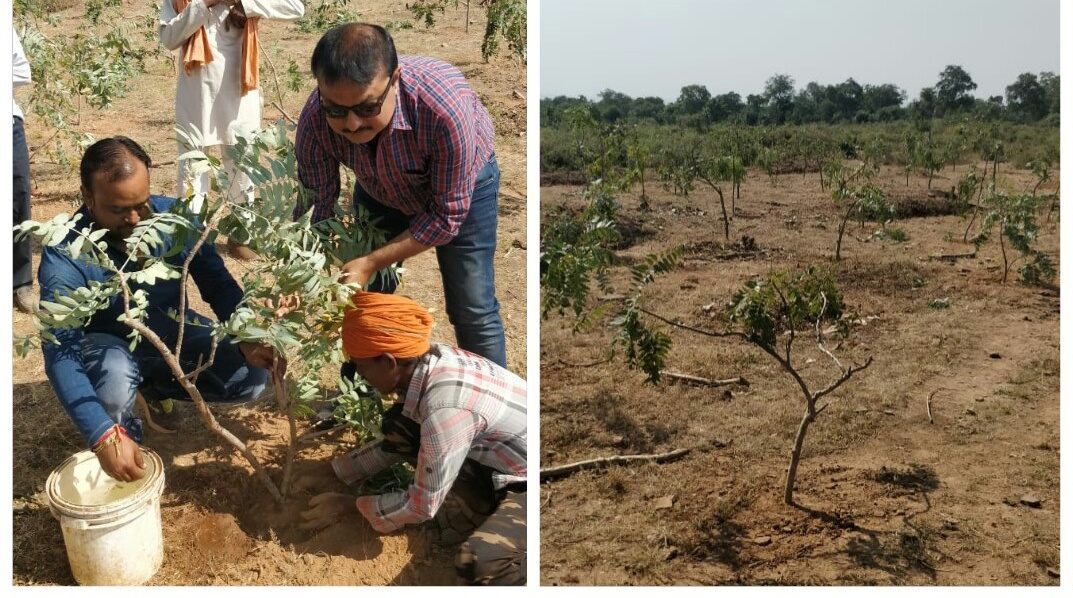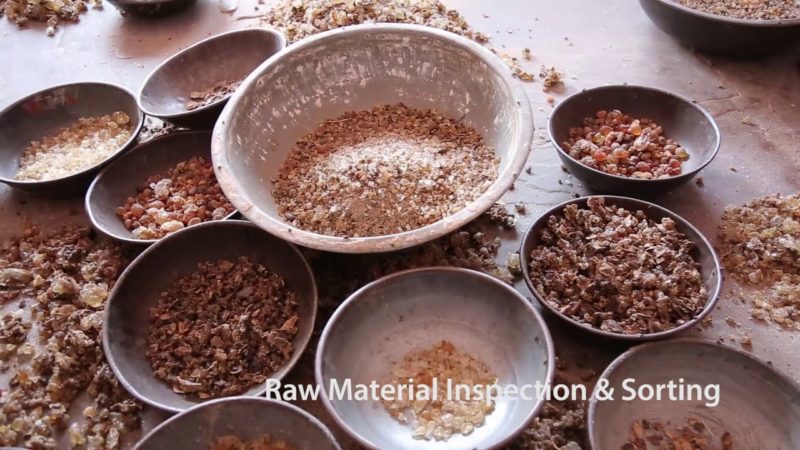On October 25, 2018, Verdure Sciences, a supplier of plant-based ingredients, partnered with their long term supplier of Boswellia serrata gum resin to plant 2000 Boswellia serrata (Burseraceae) in the Gwalior Forest region in the Indian state of Madhya Pradesh. I interviewed Kristen Marshall (Marketing Coordinator) and Ashish Kumar (Director of Quality and Compliance) of Verdure Sciences to learn more about this initiative.
Anticipating Future Demand
Ann: Why did you decide to plant saplings and in this particular region of India?
VS: There were some reports coming that the forests do not have sufficient materials to maintain increasing consumer demand.[1] At this rate, the tree populations will inevitably dwindle or disappear, and so we thought to begin taking preventative measures to maintain this essential and sacred tree with reforestation efforts, beginning with small steps like planting saplings. We selected this region because it is where we are harvesting gum resin for our clinically backed WokVel® Extract. This supports our sustainable and traceable harvesting initiatives. Additionally, the tribal population in this region is well trained to look after and maintain these trees, protecting them for years to come.
This video produced by Verdure follows the harvesting and processing of Boswellia from Madya Pradesh.
Ann: How does planting these trees relate to the overall mission of Verdure Sciences, both in sourcing ingredients and in addressing issues relating to sustainability (climate change, etc.)?
VS: Sustainability and traceability are very important Verdure’s corporate initiatives and are an integral part of Verdure’s mission for traceable ingredient solutions with tangible health applications, as they are both essential in offering ingredients with high levels of quality assurance and control. From this perspective, planting these trees in regions where we are harvesting aims to ensure that the trees that are humanely tapped are also allowed sufficient resting periods between harvests. This allows the trees to become rejuvenated and produce gum resin for a long time. This preventative effort will allow us to prepare for increases in demand, though at this time, they are just that – preventative measures.
While the Boswellia trees are very closely guarded, their populations are protected, and they are not yet in a threatened condition in this area. Verdure is diligently working ahead of demand to maintain a healthy population of trees.
Ann: With whom did you work in planting these trees?
VS: Verdure worked with the district forest officer who worked with members of the Saharias tribe (among others) to plant the trees to plant roughly 2000 saplings. The head of Panchayat (local government), and local forest officer were also present on the day the trees were planted.
Who ‘Owns’ the Trees?
Ann: Who ‘owns’ the trees and/or who owns the land on which they are planted? Who is responsible for maintaining them? What precautions are necessary to ensure the trees survive? What about threats of development or other pressures on the land? Are there things you can do/have done to ensure the trees will be protected?
VS: The land where the Boswellia saplings were planted is government-owned land in India. The resin from the trees is considered wild-harvested, or wild-crafted. The government has given these local tribal populations rights to tap non-timber resources in these forests for their living. And the government strictly regulates the tapping of all of the non-timber resources in this region, allowing only these native tribal populations in the region they live in rights to this. This particular forest area is not frequented by grazing livestock due to its location, and it is also watched over by the tribe members. The tribal population has divided the trees among families living in the region. Each family takes care of, watches over, and taps the trees in their areas. The tribe persons collect gum resin from their plots of trees and sell to the local collector/s that Verdure then works with.
Lessons Learned
Ann: What did you learn from this program that you bring to other sustainability initiatives as a company? And do you have any advice for other companies wanting to get involved in efforts like this but not sure how to begin?
VS: There are various initiatives from the government and NGOs supporting the sustainability of forest products. Verdure recognizes that the native people tapping these trees are the experts in their area; they know how to safely tap the trees, when to harvest, and how much pressure is on these available resources, as well as what the future looks like for their trees. Verdure has been grateful to collaborate in sustaining the Boswellia tree population to help preserve the resources that we are using in our WokVel® Extract. It is a small step in doing our part for the greater good. We urge other companies involved in Boswellia harvesting to get involved in similar efforts and activities to help protect the tree populations for the future.
[1] For an overview of habitat and population trends, harvesting/collection practices and uses, current threats and management measures of Boswellia see: Sustainable supply, a foundation for natural product development: The case of Indian frankincense (Boswellia serrata Roxb. ex Colebr.) by T. Brendler, J.A. Brinckmann, and U. Schipmmann. Journal of Ethnopharmacology 225 (2028): 279-286. For information on adulteration in Boswellia serrata see the Botanical Adulterants Prevention Program’s Boswellia serrata Adulteration Bulletin. Both of these articles point to the necessity of developing sustainable harvesting and management practices as well as sustainable supply chains to protect the species and prevent adulteration.



Good model, if the story is true ground. Wish forests are made more beneficial to the public. In many states in India, forest department convert every forest area in to reserved forest for no valid reason. Forest is a natural resourse. We have to make use of it sustaibly rather than keeping it under lock and key in the name of reserve forest.